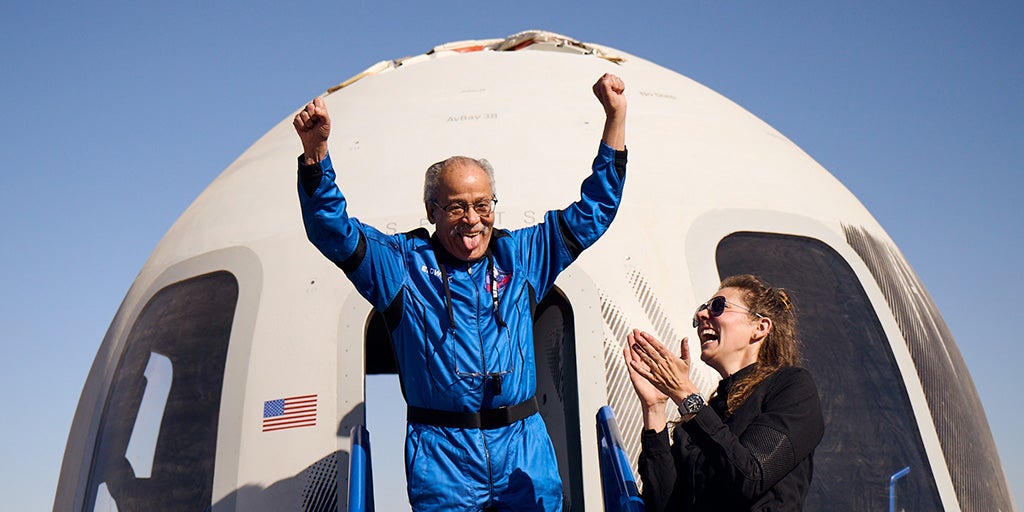Latest News

Ed Dwight exits the New Shepard capsule on May 19 after flying to the edge of space. Photo: Blue Origin
Blue Origin flew a crew of astronauts to the edge of space on May 19, returning the New Shepard rocket to crewed flight after a gap of almost two years. The mission was a success with a special nod to history. Ed Dwight, who was the first Black astronaut candidate in the 1960s but not selected to join NASA, was part of the crew.
Although it was a successful flight, one of the three parachutes on the crew capsule did not inflate during the descent to land. A Blue Origin representative said during the webcast that landing with two parachutes is “perfectly OK for this system,” with redundancies built into the design.
The booster landed successfully. Blue Origin reported the crew capsule reached an apogee of 347,464 ft AGL. The full mission time was 9 minutes and 53 seconds. The maximum ascent velocity was 2,236 mph.
This was the seventh crewed New Shepard mission overall, but it was the first crewed mission since the rocket exploded during an uncrewed test flight in September 2022. New Shepard returned to flight more than a year after the incident in December 2023, in an uncrewed mission.
After landing, Dwight, 90, said in the webcast that he was “overwhelmed” and “ecstatic.”
“I thought I really didn’t need this in my life,” Dwight said. “But now, I need it in my life. This was fabulous.”
Dwight was an Air Force test pilot and was the first Black man in an Air Force training program that was seen as a pathway to becoming a NASA astronaut. However, he was not selected to be an astronaut. After he retired from the Air Force, Dwight became a sculptor and his work has been celebrated for depicting Black history in the United States.
Dwight’s fellow astronauts included Mason Angel, founder of Industrious Ventures; Sylvain Chiron, founder of French craft brewery Brasserie Mont Blanc; software engineer and entrepreneur Kenneth L. Hess; adventurer Carol Schaller; and pilot and aviator Gopi Thotakura.
Get the latest Via Satellite news!
Subscribe Now